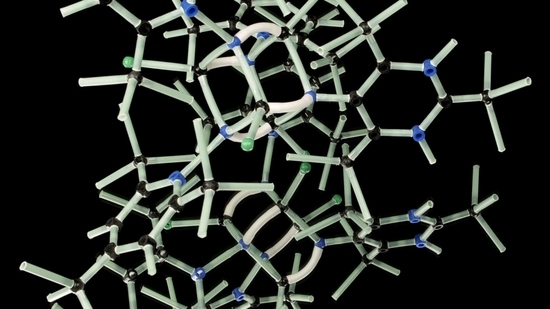World's oldest DNA sheds light on how mammoths evolved: Study
Scientists have sequenced the world's oldest DNA recovered from the remains of mammoths that are up to 1.2 million years old, an advance which sheds light on how the extinct giant mammal adapted to cold weather.
Scientists have sequenced the world's oldest DNA recovered from the remains of mammoths that are up to 1.2 million years old, an advance which sheds light on how the extinct giant mammal adapted to cold weather.

Until this discovery, the oldest genomic data recovered so far was from a horse specimen dated to 780–560 thousand years ago, the study, published in the journal Nature, noted.
According to the scientists, including those from the Swedish Museum of Natural History, this is the first time that DNA has been sequenced and authenticated from million-year-old specimens.
"This DNA is incredibly old. The samples are a thousand times older than Viking remains, and even pre-date the existence of humans and Neanderthals," said study senior author Love Dalen, a Professor of evolutionary genetics at the Centre for Palaeogenetics in Stockholm, Sweden.
In the research, the scientists analysed the genomes from three ancient mammoths, using DNA recovered from teeth remains that had been buried for 0.7-1.2 million years in the Siberian permafrost.
The findings of the new research revealed that the Columbian mammoth that inhabited North America during the last ice age was a hybrid between the woolly mammoth and a previously unknown mammoth lineage.
The scientists said there were no woolly or Columbian mammoths around one million years ago as they had not yet evolved.
This was the time of their predecessor, the ancient steppe mammoth, they added.
Based on the current study, the scientists said the oldest specimen, which was approximately 1.2 million years old, belonged to a previously unknown genetic lineage of mammoth.
They referred to this as the Krestovka mammoth, based on the locality where it was found, adding that it diverged from other Siberian mammoths more than two million years ago.
"This came as a complete surprise to us. All previous studies have indicated that there was only one species of mammoth in Siberia at that point in time, called the steppe mammoth," said the study's lead author Tom van der Valk.
"But our DNA analyses now show that there were two different genetic lineages, which we here refer to as the Adycha mammoth and the Krestovka mammoth. We can't say for sure yet, but we think these may represent two different species," he added.
According to the scientists, it was mammoths that belonged to the Krestovka lineage that colonised North America some 1.5 million years ago.
They also believe now that the Columbian mammoth that inhabited North America during the last ice age, was a hybrid.
The study found that roughly half of this hybrid mammoth's genome came from the Krestovka lineage and the other half from the woolly mammoth.
"This is an important discovery. It appears that the Columbian mammoth, one of the most iconic Ice Age species of North America, evolved through a hybridisation that took place approximately 420 thousand years ago," says co-lead author Patricia Pecnerova.
When the scientists analysed another million-year old mammoth DNA sample, they found it had gene variants associated with life in the Arctic, such as hair growth, thermoregulation, fat deposits, cold tolerance and circadian rhythms, were already present long before the origin of the woolly mammoth.
According to the researchers, these results indicate that most adaptations in the mammoth lineage happened slowly and gradually over time.
"To be able to trace genetic changes across a speciation event is unique. Our analyses show that most cold adaptations were present already in the ancestor of the woolly mammoth, and we find no evidence that natural selection was faster during the speciation process," said study co-lead author David Diez-del-Molino.
The scientists believe the techniques used in the study could be applied to further understand the processes that drive speciation and long-term evolution.



